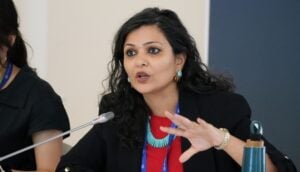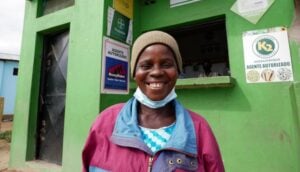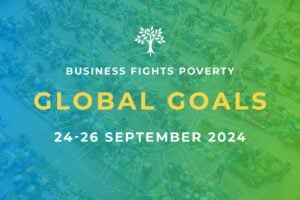Three years ago, we were celebrating the launch of LifeStraw Carbon for Water – a ground breaking project developed by global health company Vestergaard, which invested US$30million to distribute gravity-fed water filters throughout the entire Western Province of Kenya. ClimateCare developed carbon finance that made the project possible and which provides a return on the initial investment, giving ongoing sustainability to the project.
These water filters mean people no longer need to boil their water to make it safe to drink, saving carbon emissions. Filter use is measured regularly; thereafter carbon reductions are calculated and independently verified. Carbon credits are then issued by The Gold Standard Foundation and ClimateCare sells them to organisations that want to demonstrate responsibility for unavoidable emissions.
But this is different from what you might think of as ‘traditional’ carbon offsetting – where companies often source the cheapest possible means of funding carbon reductions, to help compensate for their own emissions. The organisations that support the LifeStraw project are prepared to pay a fair price for all the outcomes delivered – yes carbon reductions – but also safe drinking water, local jobs and reduced exposure to disease. They support the project because it’s an efficient and effective way to generate these multiple benefits and they want to make the project financially sustainable. In return, they want to be able to demonstrate that they have directly funded measurable benefits to people as well as the environment.
It may sound more similar to a philanthropic model, but there is a fundamental difference. Organisations only pay for results that are delivered and do so on a regular basis, over the life of a project. One advantage of this approach is that the project developer takes the initial risk. They must make the project work and deliver measurable results before they receive any payment. And, because payments are staggered, there is an incentive to maintain the project long term and make it sustainable.
Secondly, and perhaps more importantly as we look at the scale of the challenges we face, this model offers a means for investors to seed fund new projects and get a return on their money over time, opening up new opportunities to access private sector finance and increase the scale of our activity.
It’s pertinent to think about this as we approach International World Water Day, and are reminded that 780 million people still lack access to safe drinking water and that water demand is expected to increase by 44% by 2050. In projects like LifeStraw Carbon for Water we have a project model in operation that is sustainable, scalable and funded entirely through the private sector.
And it is private companies that continue to drive our thinking on how this and our future projects should develop. For example, recently Aviva wanted to measure how many people it had impacted through its purchase of carbon credits. Using the LBG framework it already employed to benchmark other CSR activity, we calculated that its investment through carbon finance into the LifeStraw Carbon for Water and Envirofit Stoves projects had improved the lives of 200,000 people. This methodology for relating investment into a project through the purchase of carbon credits, to improvements in peoples’ lives, is now something we can roll out to other clients and projects – something our corporate business clients are very excited about.
Building on this approach, Jaguar Land Rover is working with LBG, PWC and ClimateCare to agree a consistent and robust way to measure and report against its new target of ‘Creating opportunities for 12 million people around the world by 2020’. It expects to deliver 5 million of these opportunities for people through smart use of carbon finance (offsetting through Climate and Development projects).
As a first step towards this target, Jaguar Land Rover purchased all the credits from an entire region of the LifeStraw Carbon for Water project – Busia. This is the first time this has ever been done, but we believe it may become a more popular approach. By ring fencing its support, Jaguar Land Rover was more able to see the direct impact of its investment, which not only offset its entire UK manufacturing assembly emissions for one year, but also funded provision of safe water to 700,000 people in the Busia area.
This regional approach also made it easier to communicate activity to staff and other stakeholders who can visit the area and identify with the community there. Going forward Jaguar Land Rover plans to invest up front in some brand new Climate and Development projects, as well as continuing to support existing projects through purchasing the outcomes they deliver.









